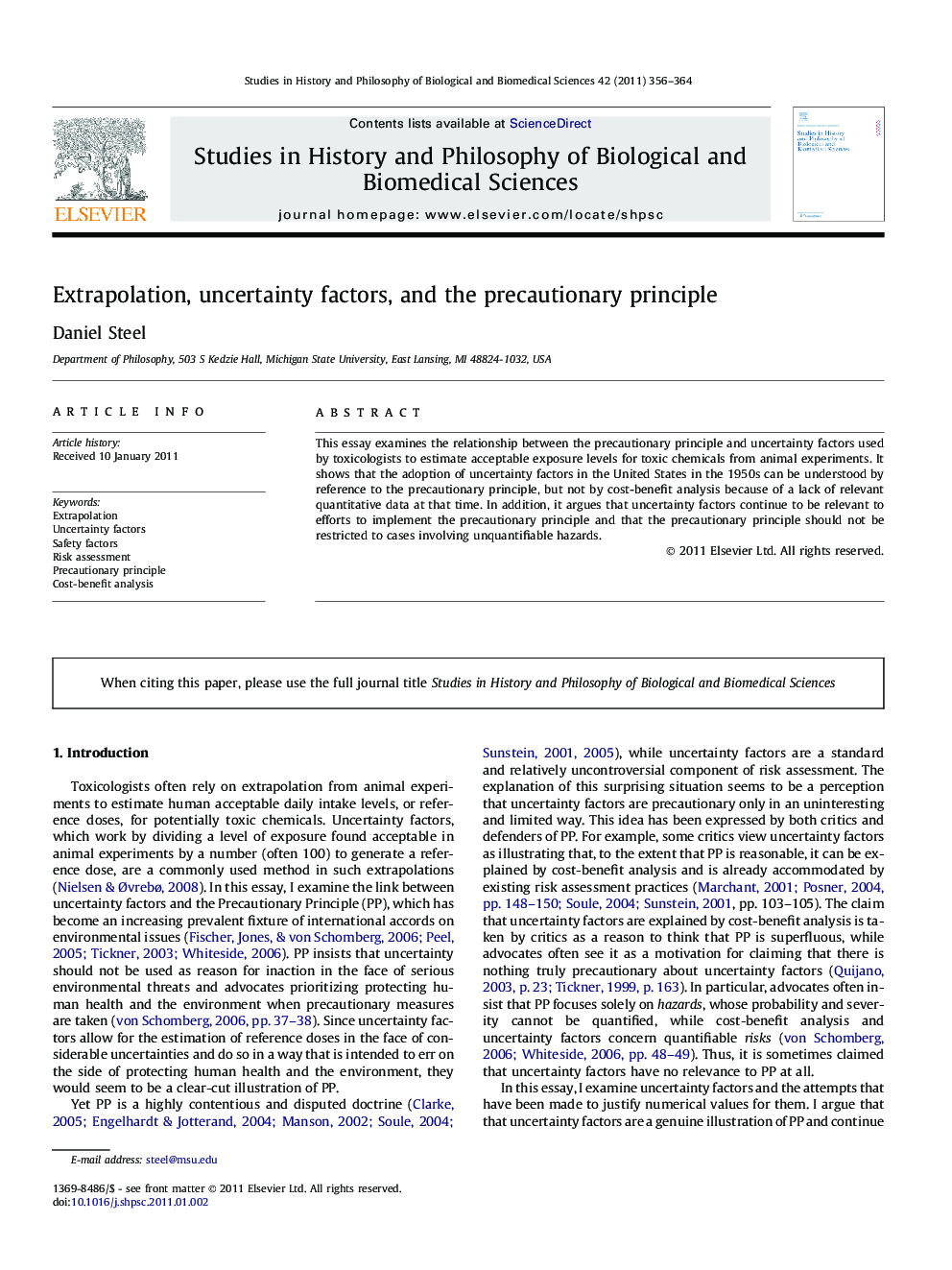| Article ID | Journal | Published Year | Pages | File Type |
|---|---|---|---|---|
| 1162215 | Studies in History and Philosophy of Science Part C: Studies in History and Philosophy of Biological and Biomedical Sciences | 2011 | 9 Pages |
Abstract
This essay examines the relationship between the precautionary principle and uncertainty factors used by toxicologists to estimate acceptable exposure levels for toxic chemicals from animal experiments. It shows that the adoption of uncertainty factors in the United States in the 1950s can be understood by reference to the precautionary principle, but not by cost-benefit analysis because of a lack of relevant quantitative data at that time. In addition, it argues that uncertainty factors continue to be relevant to efforts to implement the precautionary principle and that the precautionary principle should not be restricted to cases involving unquantifiable hazards.
Keywords
Related Topics
Life Sciences
Agricultural and Biological Sciences
Agricultural and Biological Sciences (General)
Authors
Daniel Steel,
